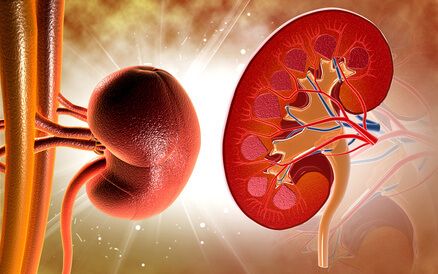The Treatment of severe aortic stenosis has experienced a significant revolution with TAVR, especially in high and intermediate risk patients, and it is now extending to low risk patients. In the US, nearly half of patients under 64 are being treated with TAVR.

One of the fundamental questions that still remains unanswered revolves around device durability in low risk patients. At present, the NOTION followup spans 8 years, mostly with first generation Medtronic valves; it is 4 and 5 years for the PARTNER 3 and Evolut Low Risk trials, respectively. On the other hand, surgical valves are followed up for longer periods.
A 10-year outcome analysis of the NOTION trial was carried out, including 280 patients with severe aortic stenosis, 135 undergoing TAVR, and the rest opting for SAVR.
Primary end point was defined as all-cause death, MI or stroke.
According to VARC-3 criteria, researchers analyzed bioprosthetic valve failure (BVF), defined as valve related death; severe structural hemodynamic deterioration (SVD) or reintervention, and bioprosthetic valve dysfunction (BVD), considered moderate when presenting mean gradient ≥20 mmHg, or mean gradient ≥10 mmHg in the last 3 months, or new regurgitation ≥moderate and severe when there was mean gradient ≥30 mmHg or mean gradient ≥20 mmHg in the last 3 months, or new severe regurgitation.
Groups where comparable, with mean age 79, 47%women, and STS 3±1.7%.
After 10 years, there were no significant differences in primary end point (65.5% vs. 65.5%, HR 1.0; 95% CI 0.7–1.3, P = 0.9 for TAVR and SAVR respectively), or death, MI or stroke, stroke sequel or TIA. SAVR patients showed higher incidence of atrial fibrillation (74% vs. 52.1%, p<0.01), while TAVR patients presented more need for definite pacemaker implantation (44.7% vs. 14%, p<0.01). There were no differences in endocarditis or clinical bioprosthesis thrombosis.
At echocardiographic analysis on bioprosthesis durability, severe SVD was lower in TAVR patients (1.5% vs. 10.0%, HR 0.2; 95% CI 0.04–0.7, P = 0.02), with no significant differences in BVD (9.7% vs. 13.8%, HR 0.7; 95% CI: 0.4–1.5, P = 0.4 for TAVR and SAVR respectively) and low reintervention rate (4.3% vs. 2.2%, P=0.3).
Read also: Contemporary Outcomes of CTO PCI in Europe: The ERCTO Registry.
Gradient was lower in TAVR patients, and they presented also a larger effective aortic orifice area. Even though moderate to severe paravalvular leak was more frequent among TAVR patients, this was not associated to higher mortality rate.
Conclusion
For patients with severe aortic stenosis and low surgical risk, this randomized trial comparing TAVR vs SAVR found no differences in major clinical events risk at 10 year followup. The risk of structural valve deterioration was lower in the TAVR group vs SAVR, while the risk of bioprosthetic valve dysfunction was similar in both groups.

Dr. Carlos Fava.
Member of the Editorial Board of SOLACI.org.
Original Title: Transcatheter or surgical aortic valve implantation: 10-year outcomes of the NOTION trial.
Reference: Hans Gustav Hørsted Thyregod, et al. European Heart Journal (2024) 00, 1–9 https://doi.org/10.1093/eurheartj/ehae043.
Subscribe to our weekly newsletter
Get the latest scientific articles on interventional cardiology





